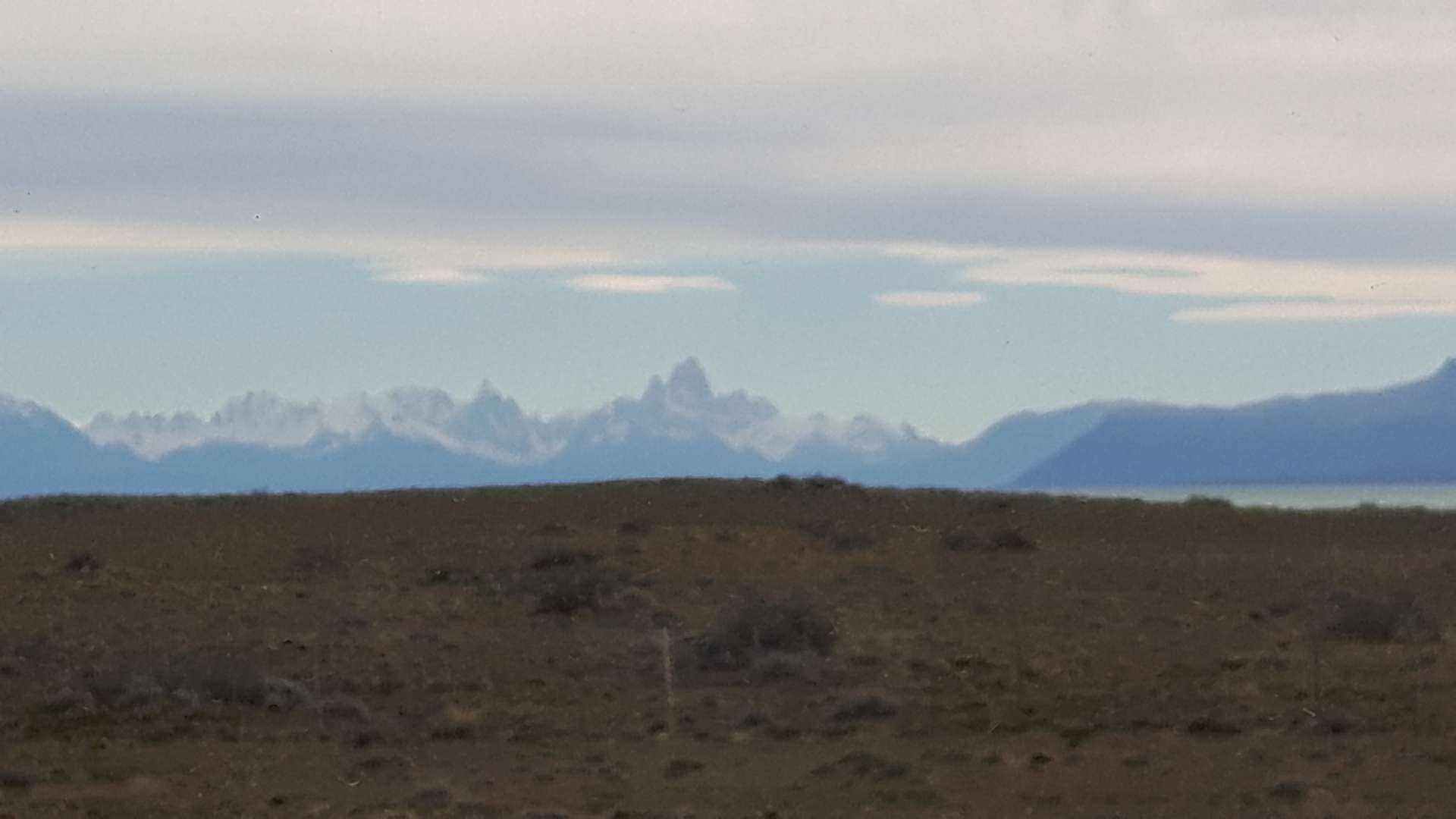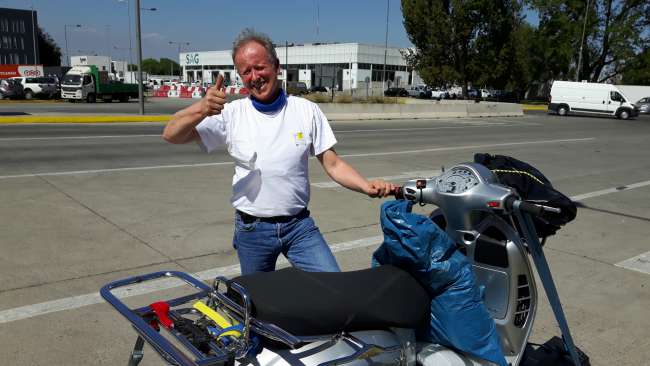ab 05.07.: Machu Picchu - 2,400 m
Publikovaný: 18.07.2017
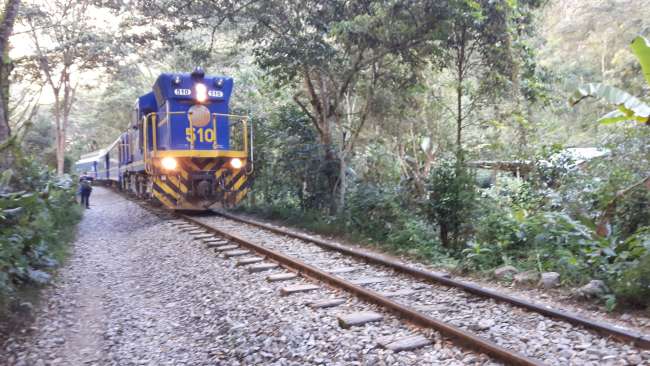
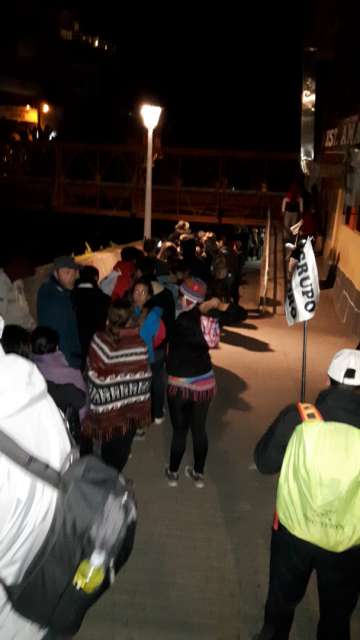
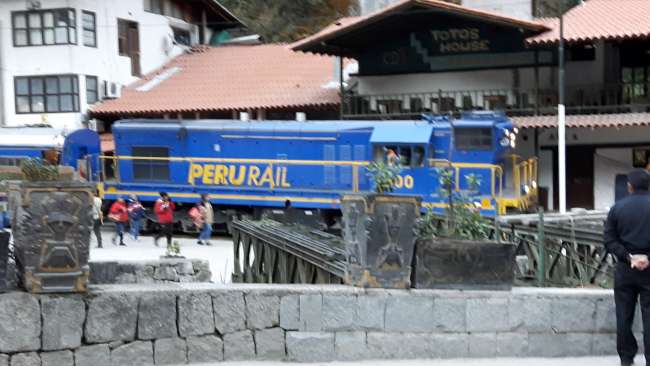
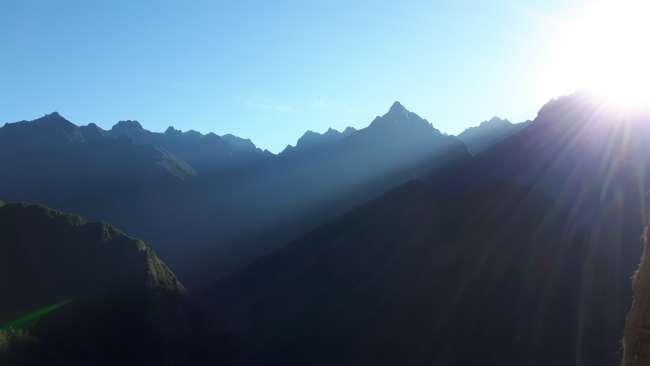
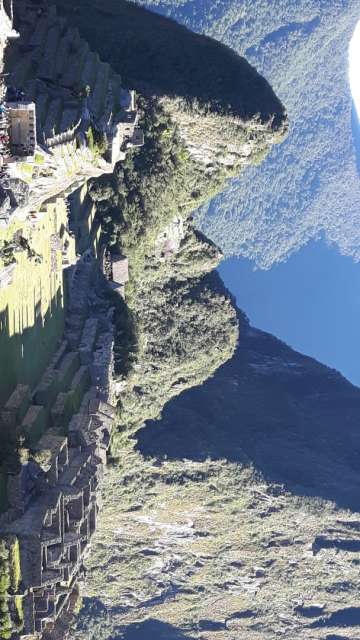
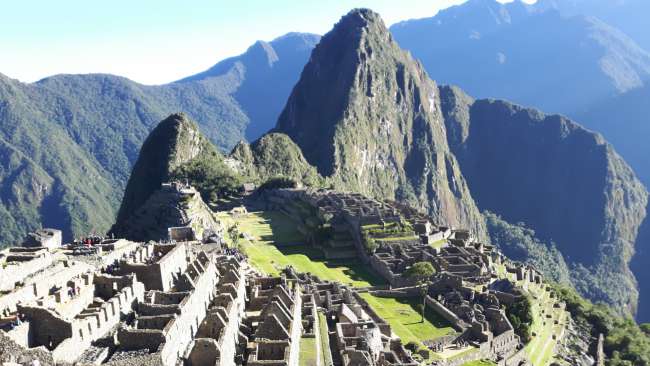
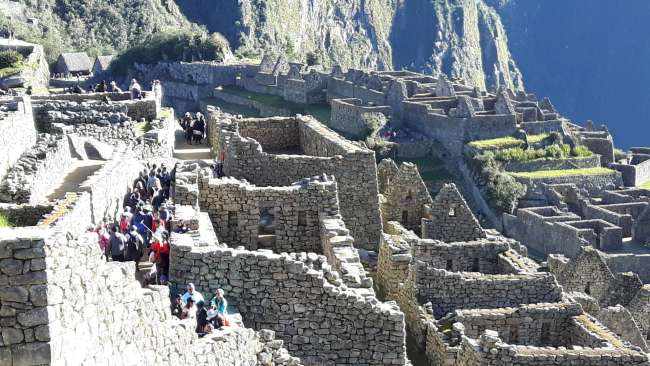
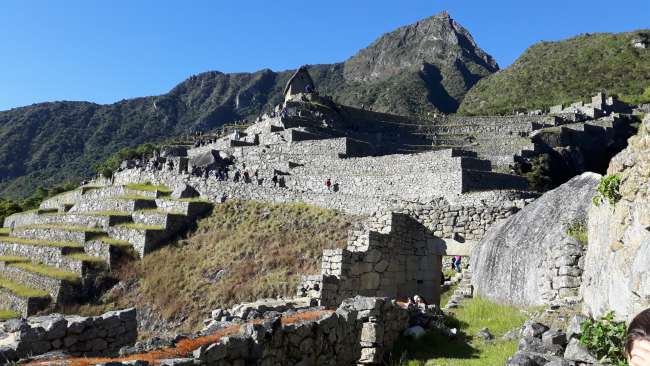
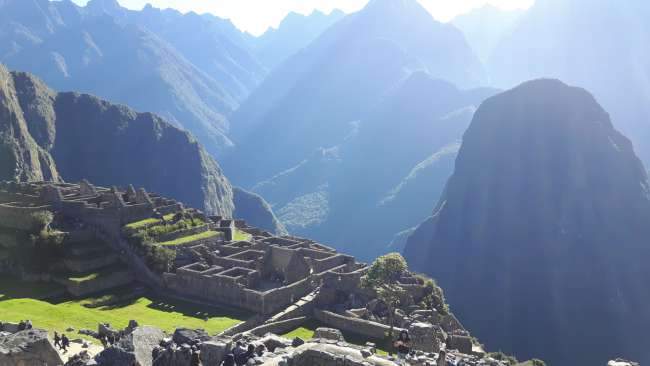
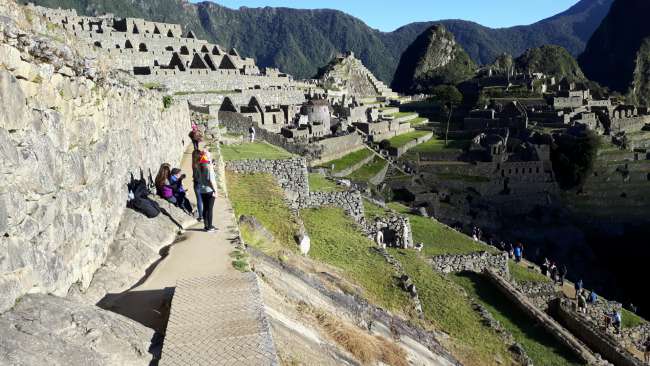
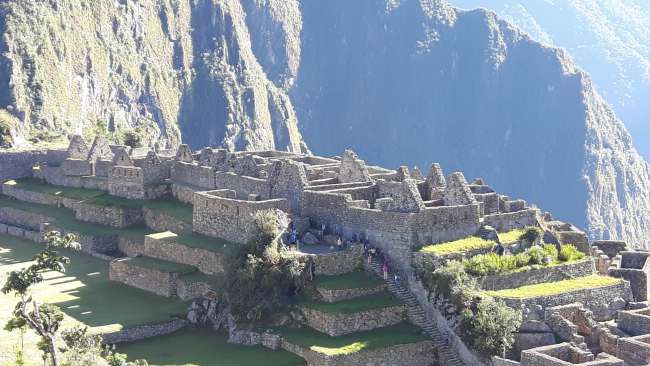
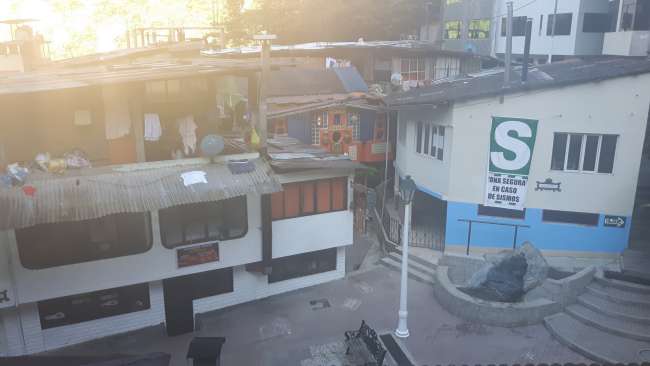
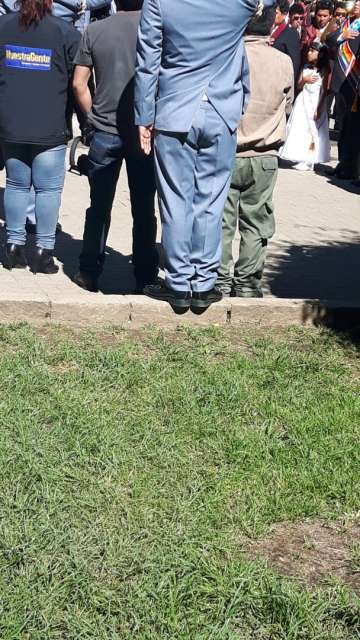
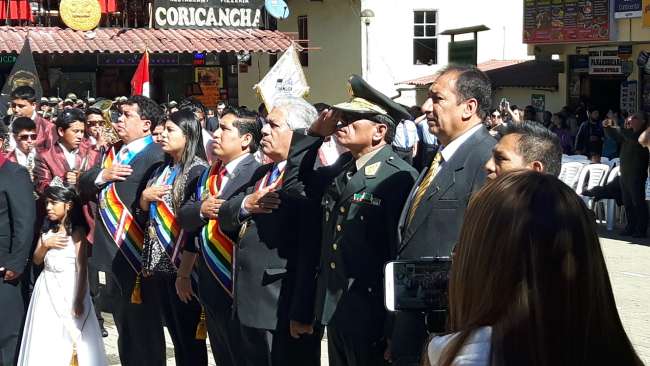

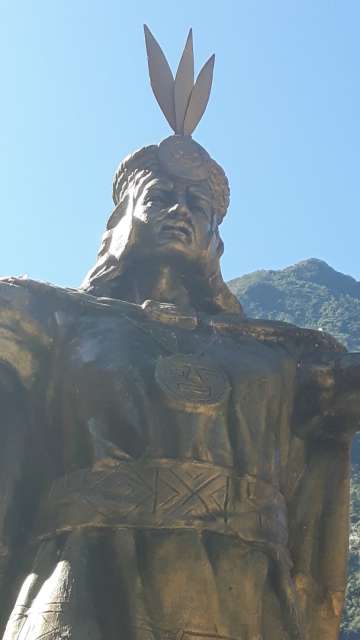
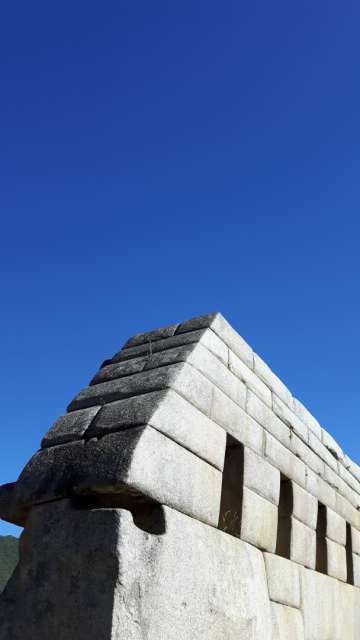
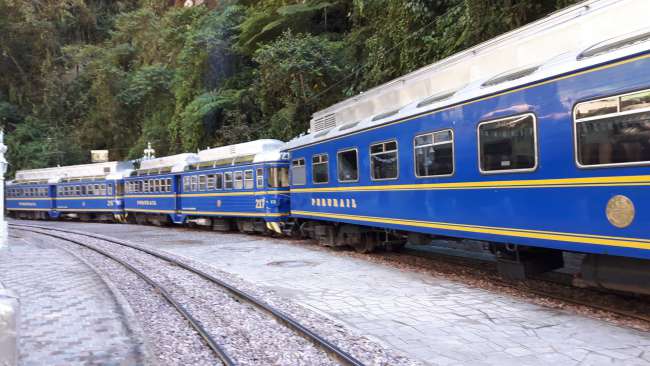
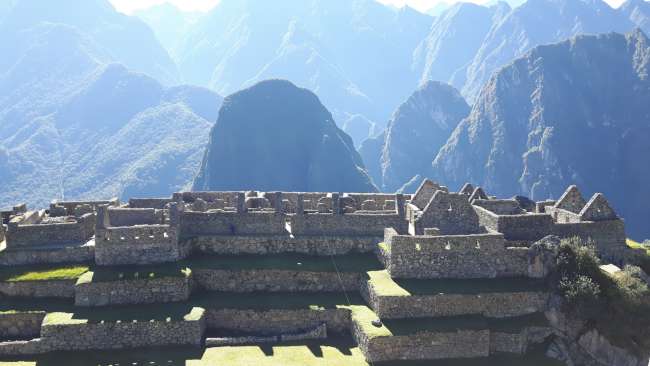
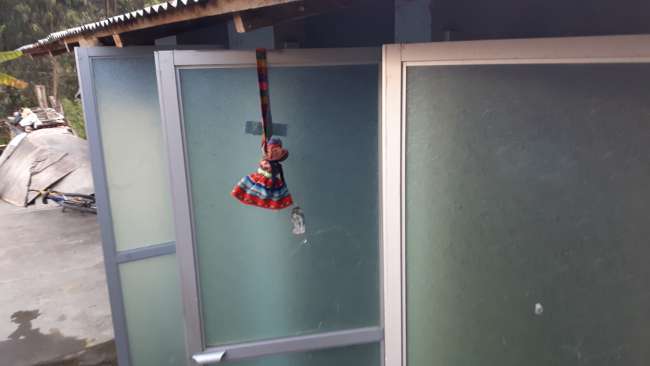
Odoberať novinky
05.07.:
manuela, max and oliver, the family from Switzerland, have also booked the tour, so we can share a taxi into the city in the morning.
at plaza de arma, we are picked up by a guide and taken to a waiting sprinter. the start is on time, the first break at a green rest area, and then things get serious. in between, a near mishap that I wouldn't wish on anyone.
in peru, it can happen that toilet paper needs to be bought separately or that it is provided. but it can also be that you can't buy it at all and it is not available...
but that is not written anywhere, and even if it were written somewhere, your interest is rightfully focused on other things when entering this place...
I'm lucky because oliver gets me out of the awkward situation. and who knows how long the sprinter would have waited?
the intermediate station we want to reach is called hidroelectrica. here there is a power plant that supplies large parts of the cusco region with electricity. the sprinter drives to this point. then we continue on foot to aquas calientes or by peruvian train.
the journey above the urabambatals valley up to here is not for the faint-hearted. the sprinter has long since left the asphalt road and is now struggling over the gravel road to its destination. there is enough space for one vehicle on the track, on the right there are rocks and on the left - positively viewed - a great view of the urambatal - but rather a gorge that presents a challenge for driver and passengers.
seemingly innocent small streams that cross the track in their own way, but of which I do not know how much percent of them have already caused an erosion of this section...
as with flying or sitting in the passenger seat: don't think too much, surrender and enjoy. and not least admire, because at some point this gravel road was rammed into the hill and certainly also provided for the necessary drainage.
with what and how many workers and in what time?
that this sprinter - possibly with the same bus driver - will drive back this route after only one hour break??
we arrive around 1:30 p.m, the driver addresses us as friends, gives us some tips, and disappears. around me people come and go, english predominates, there are no signs, an ant trail that shows the direction cannot be discerned anymore because now there are feeders everywhere, so it is wise to move away from the unstructured swarm of people - eventually the human trail will emerge.
manuela, max and oliver have already gone ahead. I don't think they will take the train. but with max? is he fit enough to take a three-hour walk after the exhausting journey? I let the family go and set off half an hour later. the hustle and bustle of people has spread to the sprinters heading to cusco or to aguas calientes. the peruvian who has a sales stand here will not die poor. because he has a guaranteed customer base. a real gold mine.
I set off - actually dressed too warmly. that may be due to the time of day, but also to the altitude we have lost on the way from cusco to here. now we are at 2,100 m, and that makes itself felt. before branching off to aguas calientes, I have to register. a train ride costs 30 dollars!!! maybe I would have taken it, but I won't be ripped off for 30 dollars... besides, after sitting for a long time, movement feels good, there is no separate path, it follows the railway tracks in the shade. walking is fun - even after two hours. fun because there is oxygen again, because the nozzle that lets the fuel through has the right size and prevents blockages. I am amazed at my fitness. my brother bernhard reaches me via whatsapp from his campsite in the vorarlberg region, a communication like from wall to wall. to the right, the urabambu mountain stream meandering in a huge gravel bed that can handle completely different amounts of water, to the left the railway tracks, people in front of and behind me, one group loud, the other quietly exhausted. I meet my swiss friends - max is in great shape with red cheeks.. he seems to be used to actions like this. impressive!!! I don't stop - we'll see each other later in the hostel - and keep walking. and then, like in a bad horror movie, the long and mournful horn of the diesel locomotive. I turn around, look into the triangle of high beam headlights, and feel a kind of fear or helplessness in the face of this heavy ton technology.

the treacherous part: it approaches slowly but steadily, seemingly unable to brake.
I stop, far enough away from the tracks - but what is far enough - because the locomotive is quite extensive - the honking becomes more urgent - I take out my smartphone and take a photo. I can't see the driver and don't know if he's showing me the bird - in view of my recklessness, in view of the danger I am in???
soon I realize that we are approaching civilization. people coming from the opposite direction become denser, the path leads away from the tracks, forest restaurants tempt with fruit juices and I realize that my energy is diminishing. if I take a break now, it will be dark when I go in search of the hostel. so I grit my teeth and just keep walking, like the pistons in the cylinder: up and down, up and down.
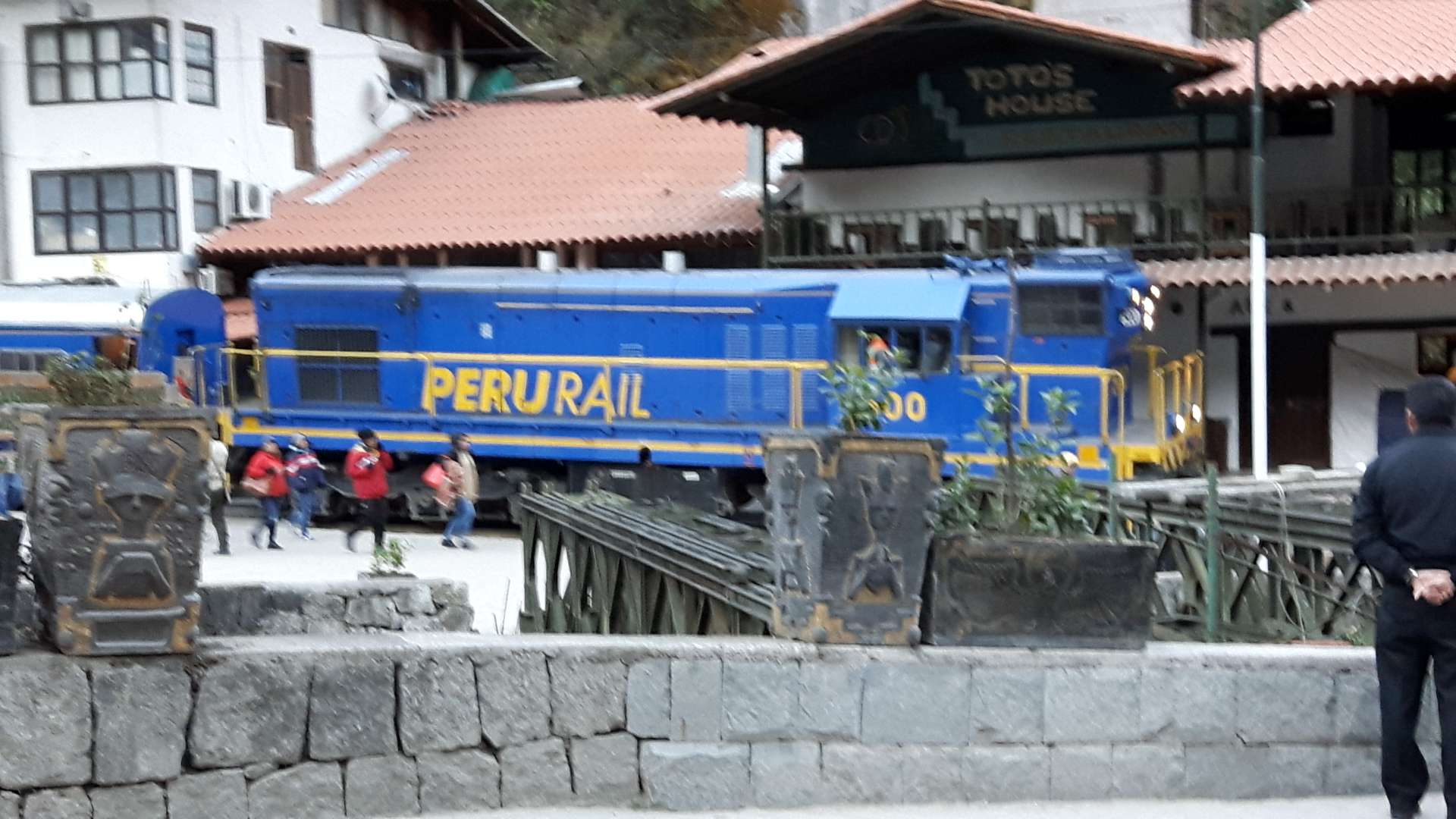
aguas calientes train station - could also be oberstdorf train station
yes, and then I have aguas calientes in sight. yes - I know: if you want to see machu picchu, you have to make sacrifices. this sacrifice is called oberstdorf and has nothing, absolutely nothing to do with peru for me. man oh man!!!! who does something like this? I also like to earn money, but where is the authority that puts a brake between reason and exploitation? now I just want to get into the protective walls of a hostel, close the door, get on the bed, and refuel, get ready for further surprises of the rest of the day.
the urubambu divides the town of aguas calientes vertically. small enchanted arch bridges connect one part with the other. I belong to the left part. searching, asking, being sent to the villages, the google maps system completely overloaded, eventually a policeman shows me the way. I enter the foyer of the hostel, equipped with white neon lighting, a sleepy-looking receptionist has trouble finding the note with my name on it - without success. I will not leave here!!!! this agency in cusco booked it, although hardly legible that this is dennys house, doesn't matter, he should take care of it. a little while later, the swiss people arrive. friend max is in great shape, father and mother rewarded with a beer, max's wish cannot be fulfilled immediately. oliver somehow finds it important to make time comparisons - how long did he take, how long did I take? I let the answer evaporate... the hostel man comes back, leads us around the corner to our hostel, on the way we meet the pizza maker who has already made a great offer to oliver for the evening. we accept that.
the shower is really hot!!! forgetting all ecological principles and other educational principles - others also want to shower - I shower until I can't anymore. from the swiss people I know that they want to shower in the morning. there will be hot water again by then.
I eat quinoa risotto and before that a hot soup. in between, we treat ourselves to avocado nacos, the beer tastes great anyway, and max is fit! a real phenomenon.
06.07.
we meet at the bus stop at half past four, breakfast at a quarter to four. that would be it, hiking up to the viewpoint of machu picchu at dawn! just like in the old days, looking down with pride on the surrounding mountains from the pendling at sunrise and having the first jaag tea? but this is a different story: steps lead up to the platform. forty to sixty minutes in a column and coping with steps of different heights? for whom and for what? for me, the motto of the day is to conserve energy. but oliver needs to burn off energy, so we calmly finish breakfast and voluntarily and willingly join the herd of sheep.

definitely two hours...
the peruvians can also be different. after my experience at the cash register in cusco last saturday evening, I imagine what would happen if we transfer this scenario to aguas calientes. but here everything runs smoothly. the online tickets we show have the QR code (Quick response) and are scanned immediately. we still need the bus ticket to the platform, that is also done quickly, and here too there is a QR code for the bus inspector. the buses gas up the winding gravel road and indeed:

shortly before sunrise we meet the proud oliver and minutes later the sun emerges from behind the jagged formation.
a clear sky, the last star fades, hats are taken off, the temperatures become bearable again. here we are at an altitude of 2,400 m.
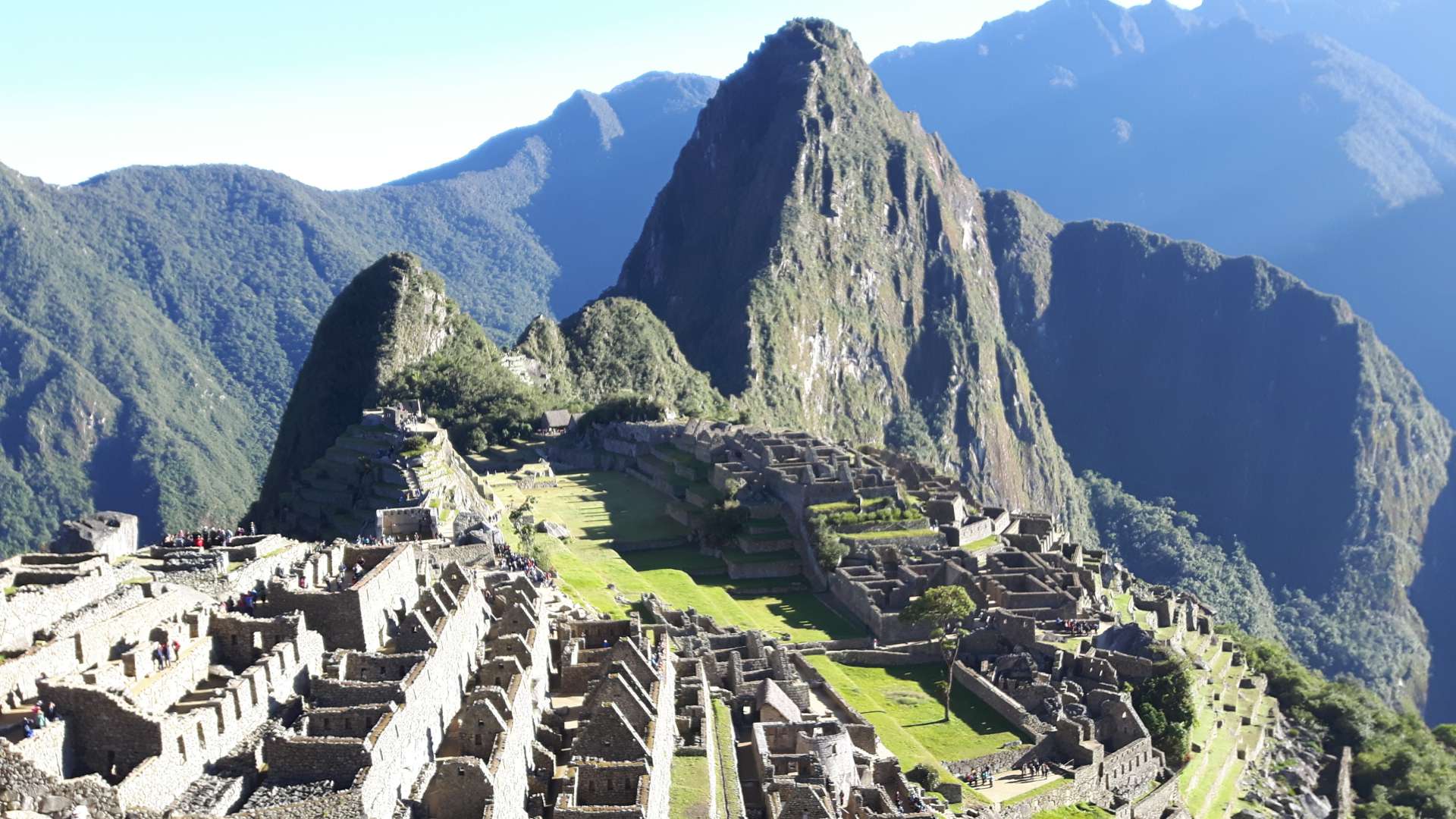
the big and the small machu picchu. if you have booked, you can climb the big one via steps hewn into the rock wall
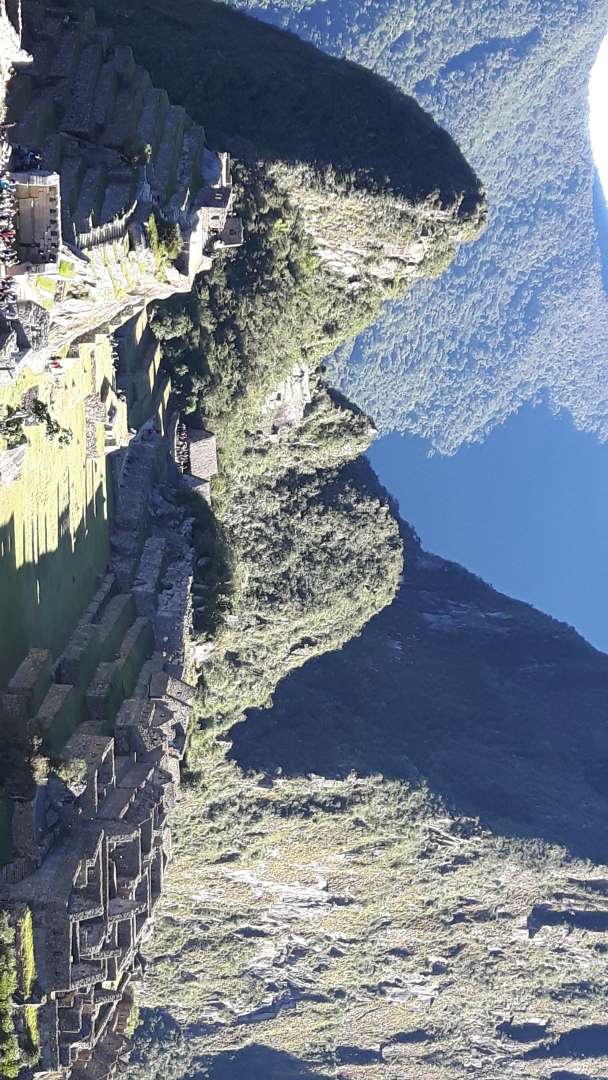
the first thing our guide points out:
look at the profile of the mountain in portrait format...
who doesn't recognize the inca profile?
why was it built? why was it not discovered by the spanish? was it a fortress or a simple city? why did the inca people leave the city at all? these are questions for which science has not yet provided answers. thanks to the archaeologist hiram bingham, the sunken city built into the mountain terraces was discovered in july 1911. they were masters of their craft, namely to create terraces for agricultural cultivation in this inhospitable area and to build cities and temples. in a place where there was neither a scale nor an angle, where basic construction had to be created first to make the plan a reality. how many years did agriculture alone take? the creation and provision of building materials! if even a stone took a month to make, how many inca people were busy with just that? then the question of transportation? smashed? but skillfully, otherwise the stone crumbles. so, as our guide says, like with any natural material, look at it carefully and discover the breaking points and then strike - like splitting wood.
our guide shows us a piece of black and very hard volcanic rock to answer the question of how the stones could have been so precise.
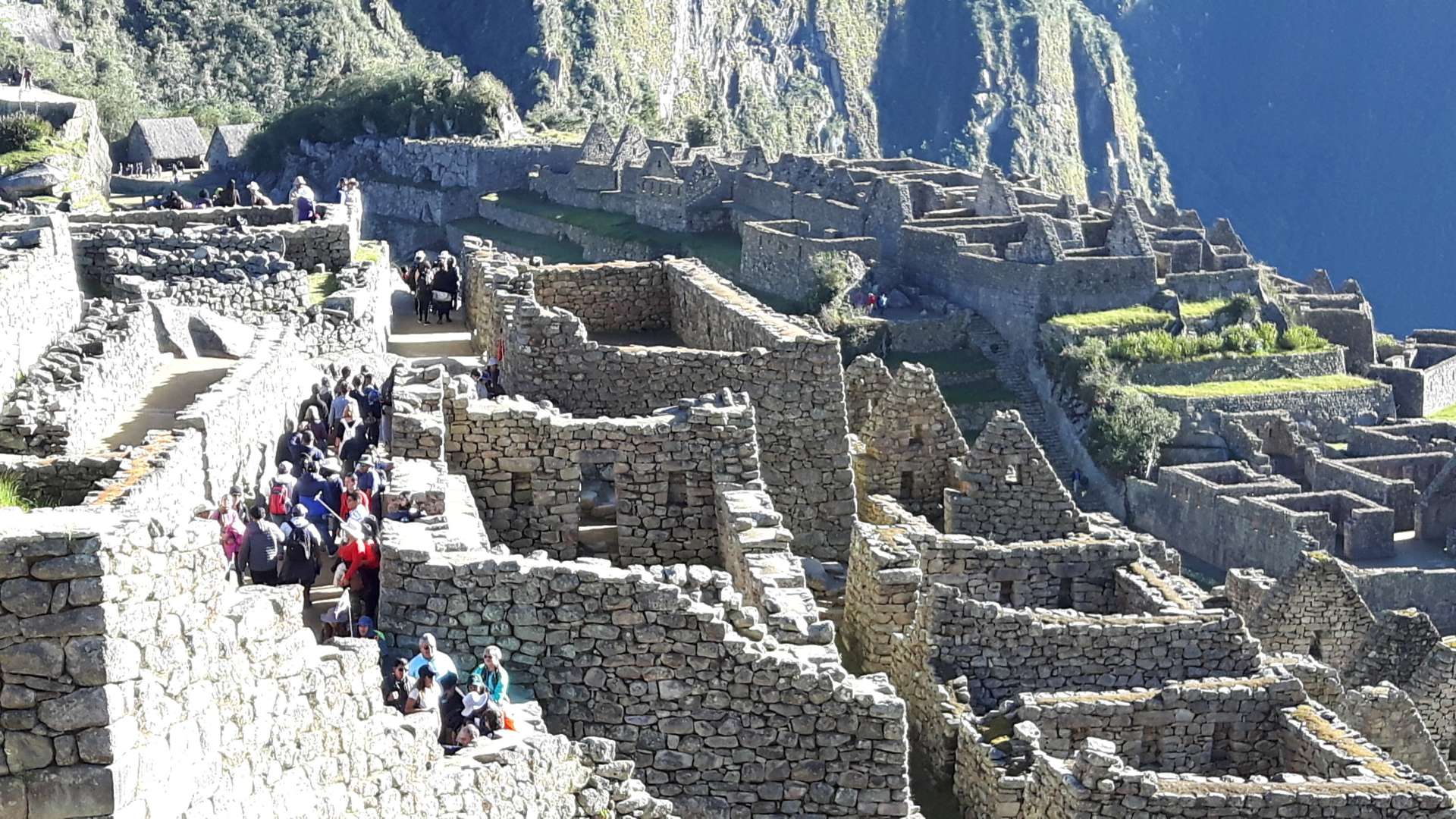
earthquake resistant - as can be seen on the wall on the left in the picture. not upright.
machu picchu was declared a UNESCO World Heritage Site in 1983. In 2007, it was even declared one of the new Seven Wonders of the World. This was done as part of a private campaign, decided by approximately 70 million people.
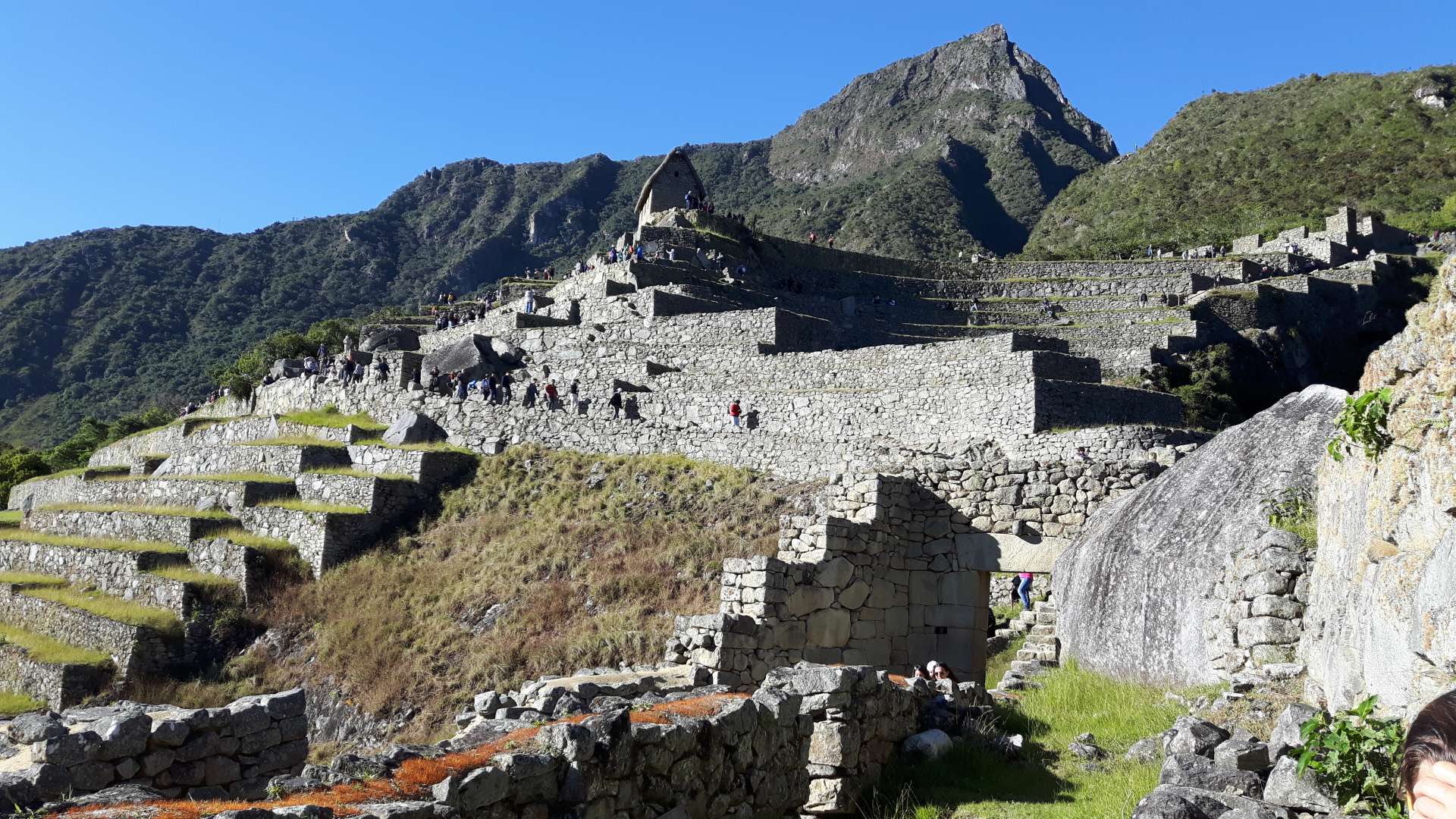
the technical achievements in road, city or bridge construction were mostly achieved with human muscle power.
the wheel and thus the wagon, draught animals like ox and horse, or pulley, potter's wheel, bellows, pliers and writing were not available. there was no arch
(wikipedia).
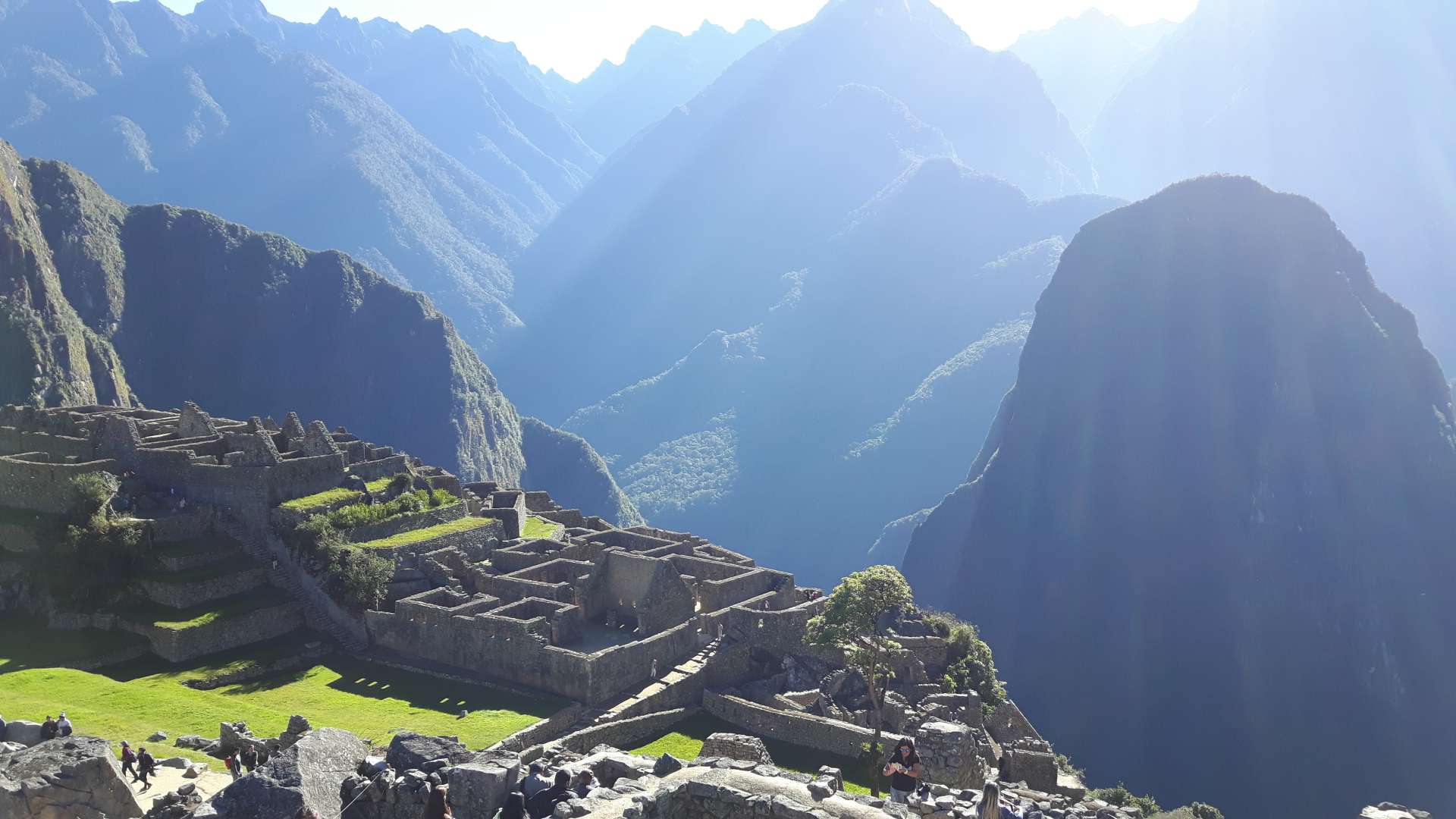
preferred location: unobstructed view. what was in the comparatively large room?
why don't we at least learn from the incan master builders in earthquake-prone areas and build walls trapezoidally upwards? only he who is in a secure position does not fall. legs apart, then he won't fall. if the legs are together, a single kick is enough and the person begins to waver. that's what our guide beautifully vividly explained to us as an answer to the question of how the inca constructed their houses earthquake-proof.
if people would take the trouble today to equip the houses there, whose gables are almost all still standing, with thatched roofs, then one could only imagine in what good condition the city really is.
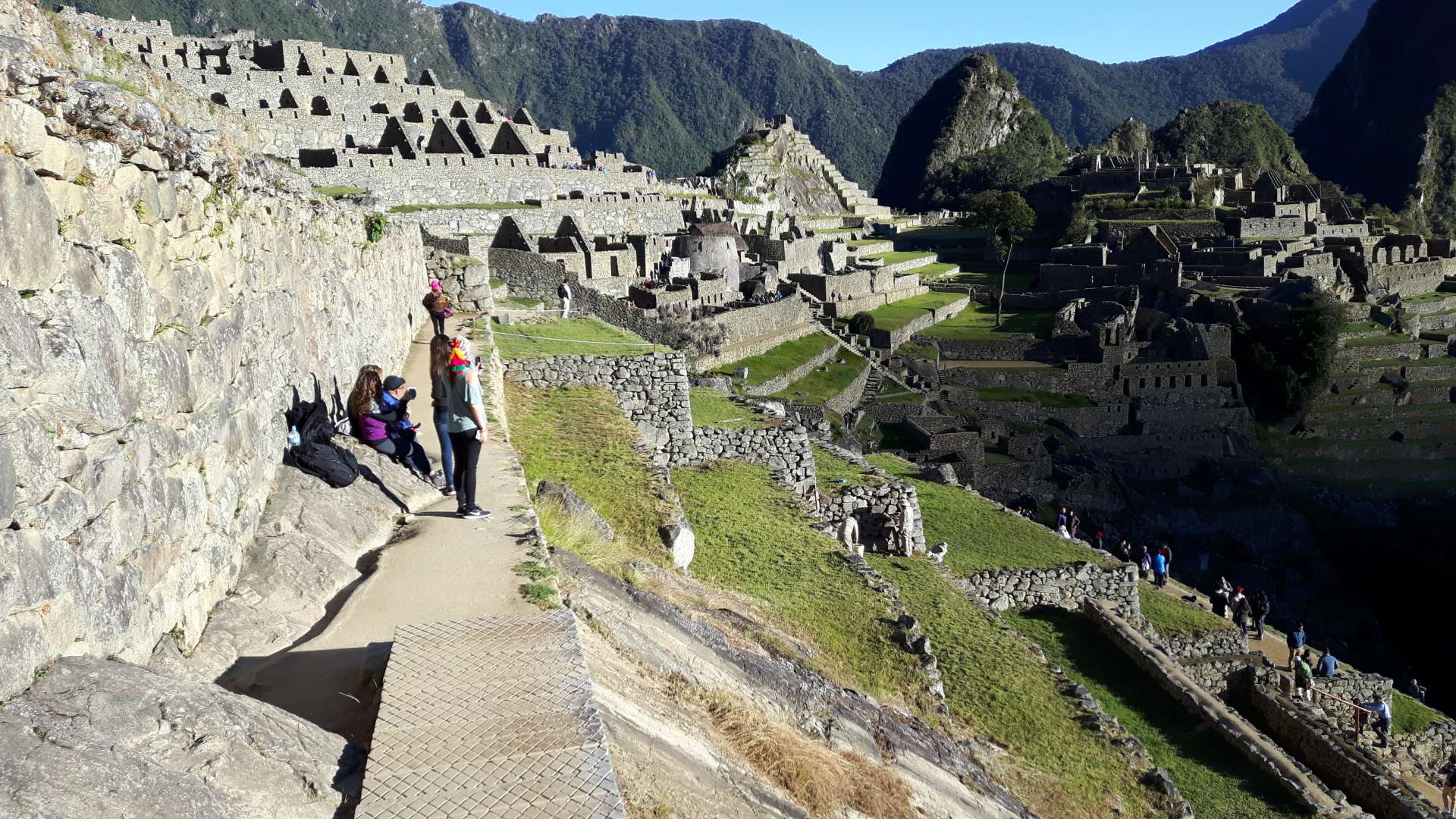
216 buildings connected by 100 stairs.
the incas adopted many things from the conquered peoples during their reign and presented them as their own invention. the incas are considered a peasant people who revered the sun and creator gods and treated their inca king as well as the aristocracy with deep respect. many injustices from today's perspective were accepted by the people. monogamy for the people, polygamy for the ruler, only one-third of the workforce for himself and the social system, two-thirds for the state and the fatherland... there was no money. meticulous records were kept.
the construction of terraces on the andean slopes became a matter of survival. experts knew when to expect storms and bad weather through weather observation, they knew exactly how deep the ditches had to be dug and put wind and evaporation conditions in relation. the position and intensity of sunlight was an important measure. if there were surpluses in the yields from the harvest, these harvest yields were stored in storage facilities that were previously equipped with sophisticated air circulation technology. the guide handed us two pebble-sized and similar-looking structures. we were to guess what they were. lentils? peas? potatoes, he corrected. they were stored in this form in the silos. before storage, the last bit of water was removed from them and at the time of consumption, they were rehydrated with the appropriate amount of water. in this way, 240 varieties of potatoes were preserved and made available to areas affected by famine.


really a miracle...
matchu picchu (old mountain) was designed in a semi-circle and is said to have the shape of a condor. where the head is, the temple must have stood.

it is already late morning, the sun is scorching, and I consider it the most sensible thing to do to forgo the sun gate and slowly make my way back to aguas calientes on foot. first I observe the hustle and bustle around me and see how the guides are provided with a hearty peruvian breakfast after their work. then - as a tourist obligation exercise - I get the machu picchu stamp for my passport and then slowly dedicate myself to the descent. I almost have the descent to myself.
around noon, I am in aguas calientes, walk through the town, eat a little more, and suddenly realize that I have been up since half past three in the morning and deserve a thorough break. I enter the hostel, go up to my room, and notice that the door is wide open, the beds made, and my personal belongings are no longer in their place. I make a fuss, a real fuss. this is going a bit too far, even with all the understanding for south american mentality! they try to make excuses and find reasons, but I simply repeat that it is not possible to clear out rooms that are booked for two nights and dispose of the guest's belongings in a black garbage bag somewhere in this house. I'm really angry!
the siesta becomes more than that, I realize the next morning...
07.07.:
of course, I am well-rested and order a breakfast with three fried eggs. it is not actually on the menu here, but I am hungry and the kitchen must have eggs. I run into the employee who was also affected by my scolding yesterday, I have forgotten, and he wishes me a good morning. I immediately ask him about the fried eggs, the No hay gets stuck in his throat, because he knows that he still owes me something.
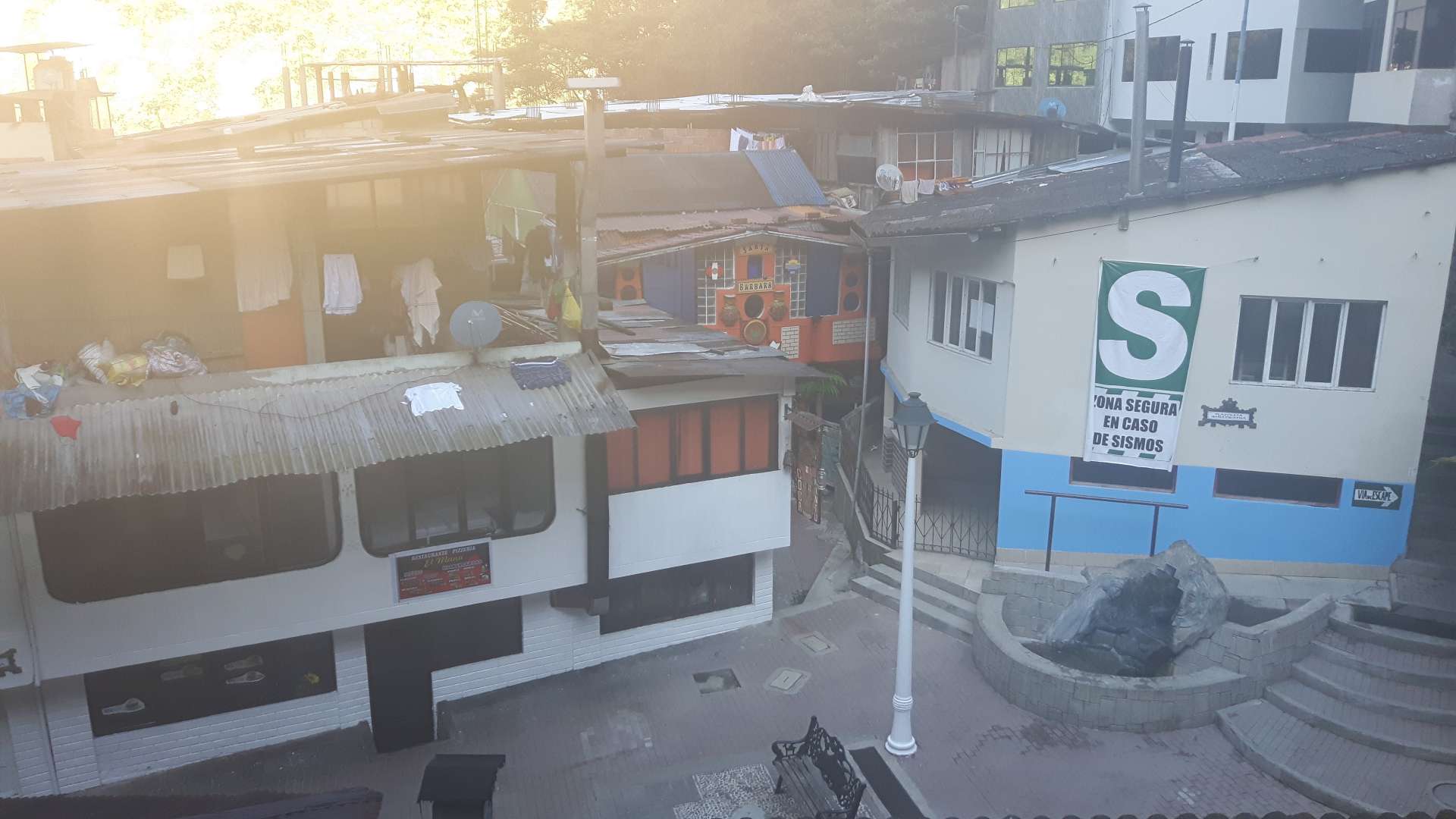
aguas calientes from the hostel window - dreariness of the rear courtyards
max is also already there. his parents are still asleep, he has a pre-breakfast with centimeter-thick margarine and jam. although I object, I enjoy the situation all the more because I am not the father and do not have to win power struggles in the morning. a little later, we say goodbye to each other - we will see each other later on the way back to hidroelectrica - and check out. of course, I pay for the fried eggs...
it is not yet 10:00 a.m., the town is in a strange uproar, I see many people dressed for Sunday restlessly hurrying through the town - is it Sunday today? but why no church bells? I let myself be carried away to plaza de arma and recognize the reason for the busy bustle.
there is an anniversary: on 07.07.07, machu picchu was chosen as one of the seven new wonders of the modern world!
a stage with two rows of chairs for the dignitaries is set up, the national flag is ready to be hoisted, the police band is starting their third rehearsal pass. it reminds me a lot of the celebrations in ayaviri.

the city dignitaries raising the flag - each person got to raise the flag a bit higher


the way to hidroelectrica I take directly from the train station - I am already prepared for loud shouts in the background that this is forbidden. but no one notices me - I still take some photos and disappear after the next bend.
this must be a gold mine, this new wonder of the world! 2,000 people are brought here every day, luckily for aguas calientes, luckily for the train and the sprinter drivers. the railway is partly owned by a company in the bahamas that is responsible for the southern parts of peru and operates, among other things, a luxury train from cusco to aquas calientes. it's always sad when badly managed countries, driven down by corruption, have to sell part of their silverware because they themselves do not have the means to keep it in order. then the rich countries come in and profit from juicy returns.
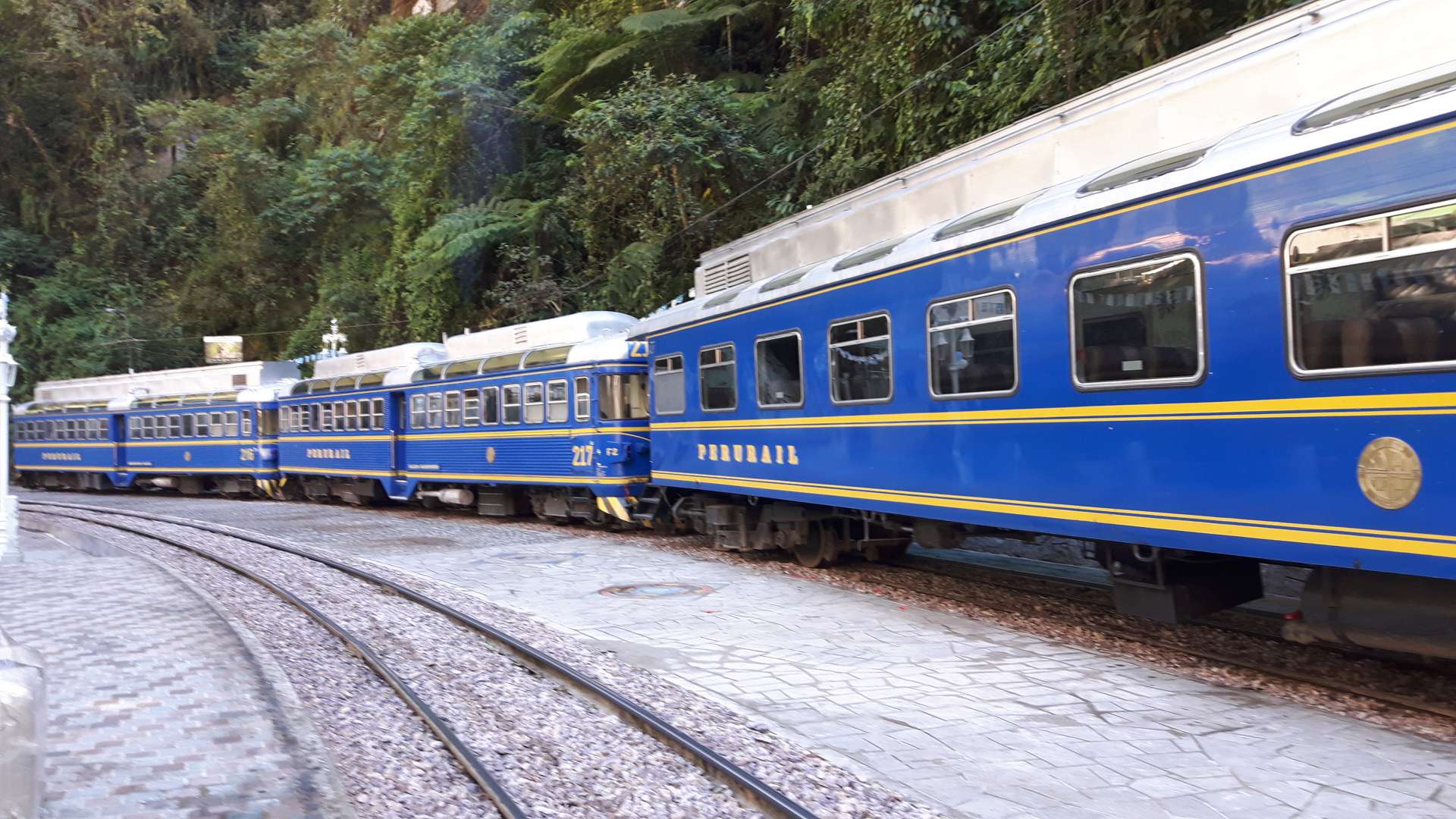
Peruvian railway also in foreign hands
I quickly regain my 'travel speed' and don't have to walk in line. soon I see max with his family from afar, who have woken up later but have already covered some kilometers. surprised looks, but when I tell them about the anniversary celebration, their somewhat pitying looks are replaced by interest. I briefly tell the story but don't want to get tired and postpone it for later.
two hours later I am back in hidroelectrica, sitting in a wicker chair and watching the arriving hikers.
our sprinter is a bit late, the driver seems stressed and doesn't have much time between the two trips. the labor union of bus drivers or the occupational safety and health department should not be here, because a little later he stands beaming in front of us, chewing coca leaves, quite excited, and beckons us into the bus. a little off to the side, I see a sprinter driver remove the front wheel of his sprinter and fix the brake... no sign of a break here - he will soon have to load the next group and take a 7 hour drive back to cusco. hopefully he didn't forget a pin in his haste...
the ride back on the gravel road is impressive again. our driver knows it inside out, and he also wants to get home. we shake and rattle, feel every turn and every avoidance of potholes. he has put a CD in, which loses its track in the rhythm of the potholes and somewhere reconnects, but he doesn't care, he sings along, and I would say: he is in the 7th coca heaven, but thanks to years of routine, he exudes confidence. most people sleep. I resign myself to my fate.
after two hours there is a break, the car is washed, the 'rest area' is well equipped and organized.
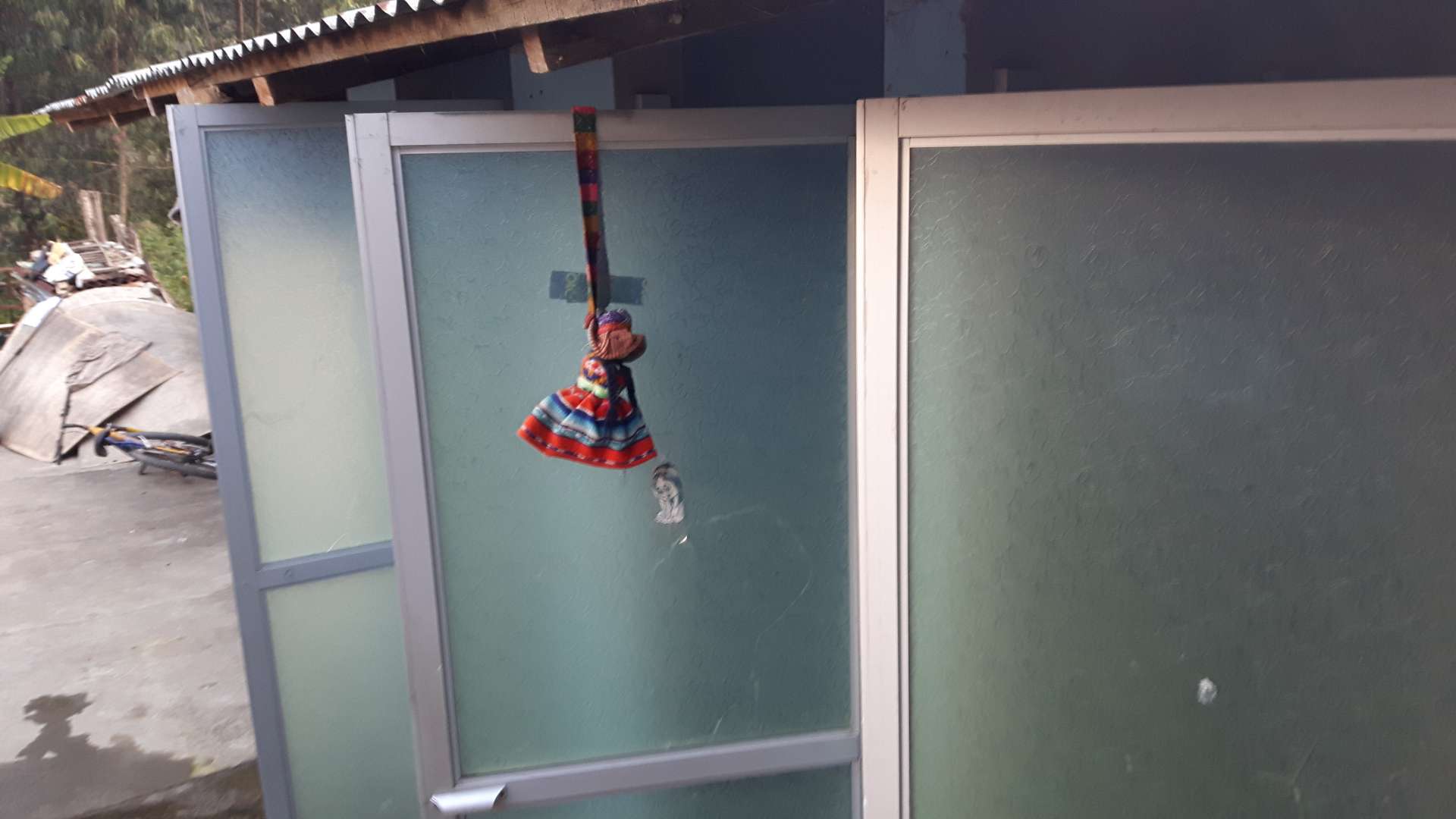
here the principle of exclusivity applies: if this facility is the women's room, then it is logical that the other one is for men...
there is money to be made here. these white sprinter buses pay off, but everything has to go hand in hand. 20 minutes, then the drivers want to continue.
the whole family is active. most customers like hamburgers. they are frozen and are already on the grill. it's incredible with what speed and efficiency they work here. when I think of the cashier from last Saturday... when we leave, the styrofoam boxes pile up, and the satisfied customer can be reasonably sure that they were still in the ice box just a few 10 minutes ago. I didn't dare. I stand at the neighboring stand, whose family is still too young and offers tasty tangerines. we chat about the weather, the altitude, and about germany.
and then we continue. it quickly gets dark, our driver no longer sings but instead focuses on the switchbacks, the tight curves, and the right side of the road when oncoming headlights want to disorient him. we have to climb back up from 2,100 to 3,400 meters. this makes me colder, and here I lay the foundation for the next three weeks.
by 9:30 p.m we arrive happily. the taxi drivers are already waiting to take the tired crowd to hotels and hostels and they demand outrageous prices. they add 100% and more and feign innocence when they are more or less laughed at. I also leave my taxi driver standing and find one at the next traffic light who offers the regular price.
hostel check-in works, I have a cozy bunk bed with a duvet (!!), reading lamp, socket, and curtain in an eight-bed room. I have planned two more days - one of which is supposed to be for the rainbow mountains, but it goes differently than I think.
Odoberať novinky
Odpoveď (1)
Matthias
Danke für den Bericht und und die Fotos!!
Cestovné prehľady Peru
